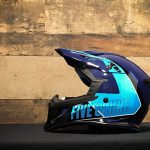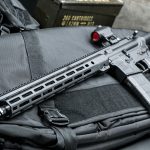Callaway Golf held an investors conference last week to update The Street on its progress in the turnaround plan initiated late in 2005. Callaway management delved into fiscal, operational, and international matters, all in an effort to show the investment community that Callaway was a company on the path to prosperity and that the woes of the last few years are a thing of the past.
The issues were most pointedly coming from the Top Flite business, which paired with softness in the Ben Hogan business, caused the company to delay its three-year goals. Though Callaway expects to make its mid-single-digit sales growth target and its low-20s ROIC goal in 2008, the company expects to miss its mid-teens operating income growth, instead anticipating a 12% to 13% gain in 2008. The company is forecasting that it will miss its plan of $80 million to $100 million free cash flow per $1 billion in sales, expecting 2008 to be at the lower end of that range. Callaway expects to hit all of those targets in 2009.
The gross margin initiatives undertaken by the company will amount to $50 million to $60 million in savings by 2008 with $20 million to $25 million of that occurring in 2007. Management broke those expectations down further with $20 million to $25 million of the total coming from the company leveraging its size to decrease cost in materials, as well as working with suppliers to find efficiencies. $15 million will come from “indirect goods and services,” meaning keeping a closer eye on costs and spending. The company will realize another $10 million from efficiencies in its own manufacturing and distribution processes, and finally $5 million to $10 million from the automation of much of the manufacturing process. Through automation of the construction process, the company has been able to reduce the steps necessary to create a putter from 23 to 13 and reduce the time spent from an hour and a half to three minutes. The putter automation process, which was implemented in Q4, is expected to be rolled out to irons, woods, and custom product by June 2007. Overall, management estimates that the automation initiative will quadruple base-line productivity by 2008.
Brad Holiday, senior EVP and CFO, took a few minutes of his presentation to address the companys inventory situation, which had been running higher than in years past. He said that this was a conscious decision to have more products on-hand after the supply issues that plagued the company in 2005. In 2006, the company experienced inventory turns at 2.3x, while its goal going forward is 2.5x to 3.0x per year. Management sees a reduction in the number of SKUs for Callaway product as a means to improve the inventory turns number, paired with shortening the supplier lead time from 90 days previously to 60 days now, with 45 days as a goal for some products.
Callaway currently sees its International business account for approximately 45% of net sales, but generating 50% of the margin contribution. As with every other company in the sporting goods industry, ELY sees major opportunities in China, with Thomas Yang, SVP of international, saying he believes “international will be over 50% of sales in the future.” The International division is also being included in the design process with fashion trends from Europe and technology from Asia all helping to create the final product shown in the U.S.
Brand-wise, management sees Top Flite as the last major hurdle for the company to overcome. The brands 2007 performance was described by CEO George Fellows as “a very big disappointment.”
Bill Knees, SVP of marketing, noted that the “wounds have been self-inflicted” as the brand was left to languish after its acquisition in 2003 and that the downward spiral “absolutely has to stop in 2007.” To reverse the trend the company has focused on reducing the SKU count, from 59 down to 11 SKUs, with the new D2 ball reportedly reopening 900 green grass accounts for the brand. The Ben Hogan brand is expected to get more focus in 2008.
Odyssey was repeatedly called a “gem of a brand;” and, was described as twice the size of its nearest competitor in the putter segment, “highly profitable,” and a sales growth driver with 8% to 10% annual increases. Callaway was said to have the top market share in irons for 2006 despite a 2.7 percentage point decrease to 24.2% of the market. The woods business was said to have the number two market share at 17.0%, up 50 basis points, while balls share was also number two at 10.9%, up 30 basis points. Though the company ranks fourth in market share in bags, the category saw the largest percentage point increase in 2006, up 1.3 points to 10.6% of the market. Knees also discussed the launch of Callaways on-line retail enterprise which he sees as still a small part of the overall business, but nonetheless, he made sure to point out that the venture is “done in partnership, not in competition” with the companys current retailers as they will be fulfilling the orders.
The company sees customized equipment as a major growth driver in the future. Just two years ago, 50% of players played with custom gear, while 60% did so in 2006. In surveys of the marketplace, the company said that 80% of consumers plan to purchase their next set of clubs customized. Management also pointed to the womens market as an area for growth, as well as a repositioning beyond simply golf equipment and into golf lifestyle.
During 2006, Callaway bought out its shoe licensee and is currently seeing both growth in sales and distribution. In its apparel license with Ashworth, Callaway product accounts for “approximately one-third of Ashworths business.” Fellows said that during the coming year, ELY would be working with ASHW on integrating distribution and improving efficiencies.











